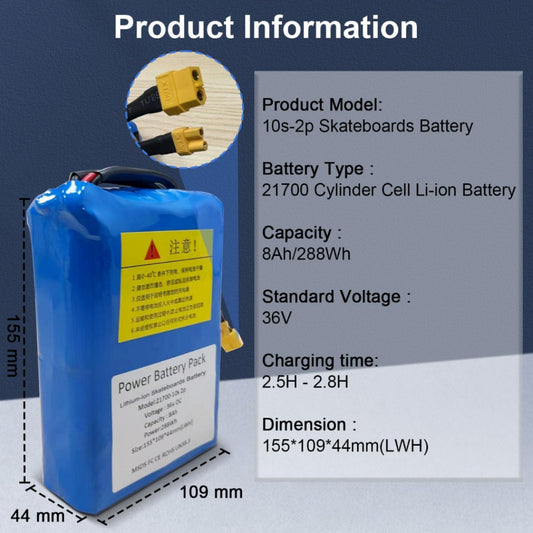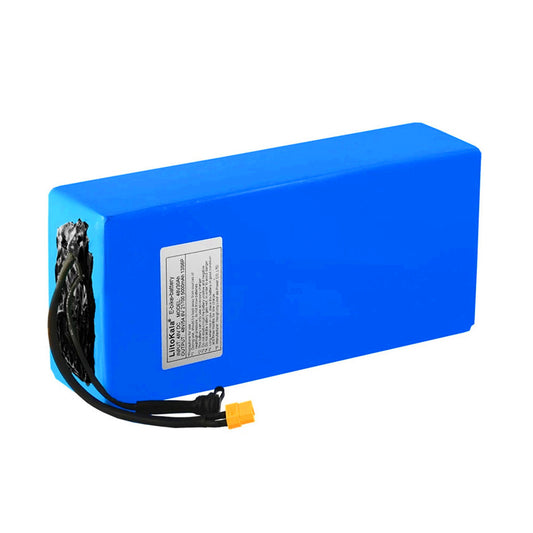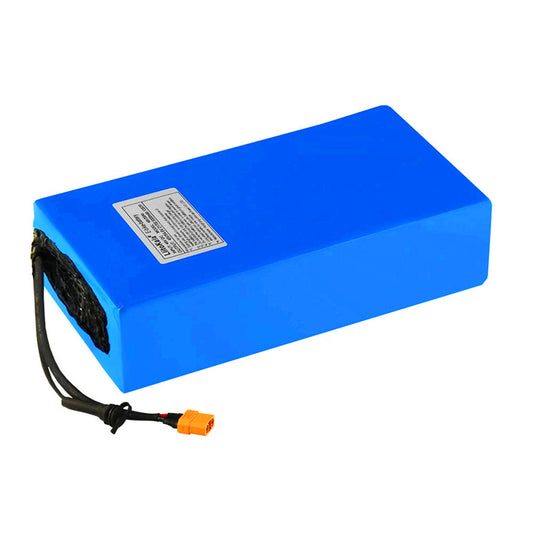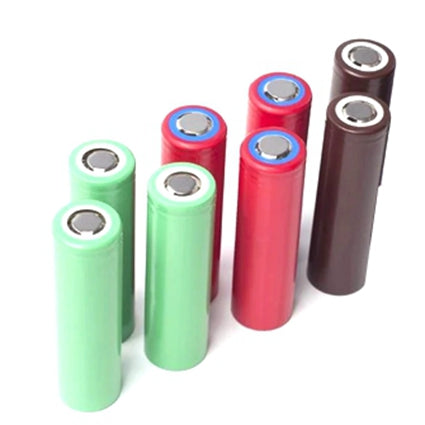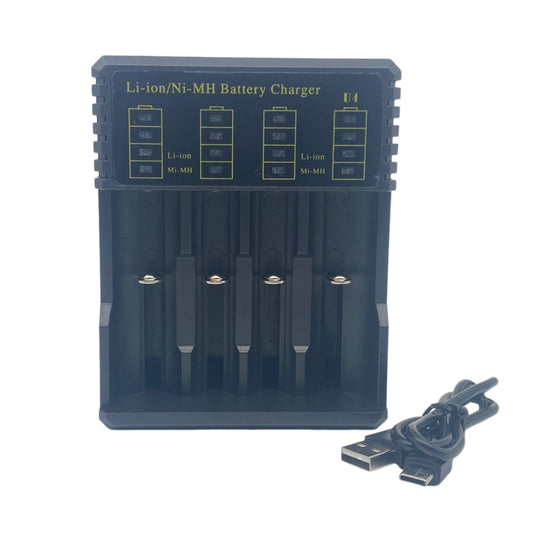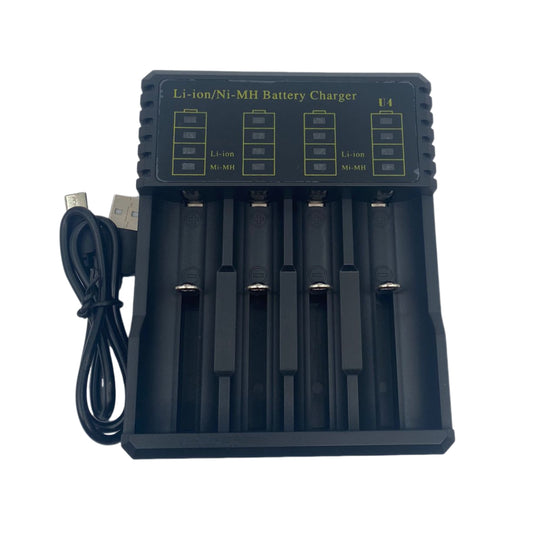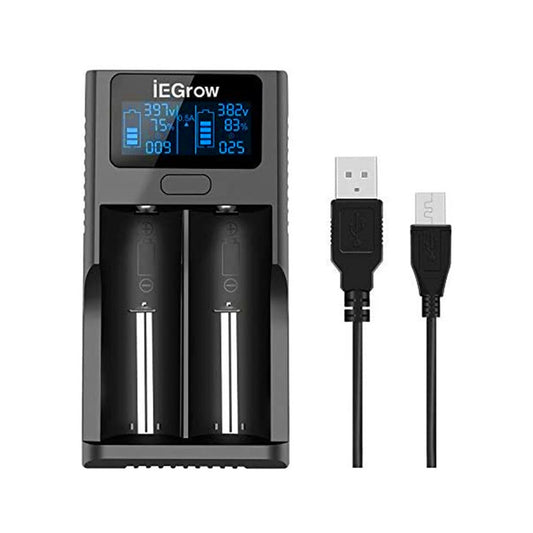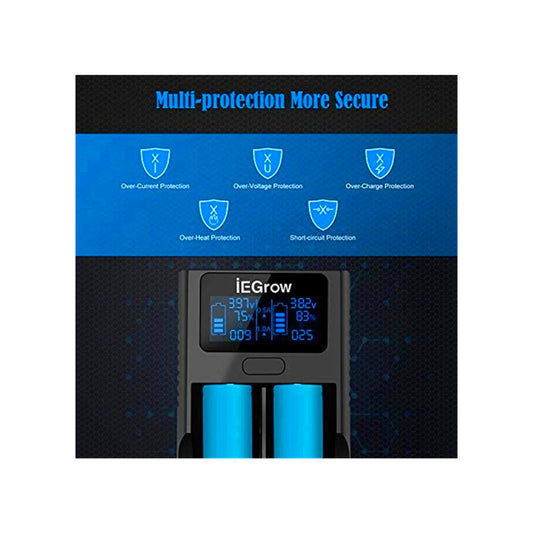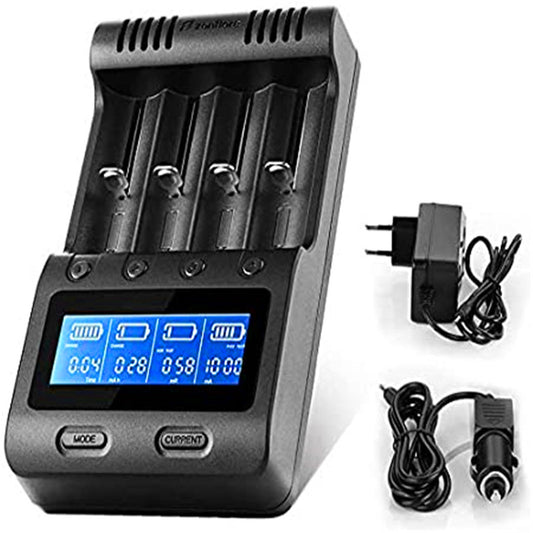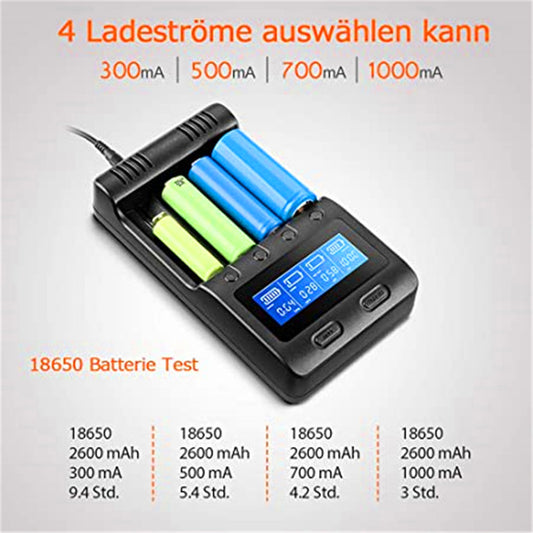In the series of devices we use daily, the 18650 battery plays an irreplaceable role. However, you might not know that even batteries labeled as "18650" can have vastly different internal chemical compositions and performances.
You may have noticed many battery product models marked with terms like "IMR," "INR," etc. What does this mean? This article will take you through an in-depth understanding of the four mainstream types of 18650 batteries—IMR, ICR, INR, and IFR—analyzing their chemical compositions, performances, applications, and their respective advantages and disadvantages. If you're looking for 18650 lithium batteries for sale, this article will help you.
Introduction to Various Types of 18650 Batteies
IMR 18650 Batteries (Lithium Manganese Oxide Batteries)
"IMR" batteries refer to those that use lithium manganese oxide (LiMn2O4) as the cathode material. In IMR 18650 batteries, "I" stands for Lithium, "M" for Manganese, and "R" denotes Round.
Chemical Composition: IMR batteries are primarily composed of lithium and manganese, often containing small amounts of other metals to enhance performance and stability.
Advantages: Capable of providing high discharge rates, suitable for high-power devices; offers better thermal stability, reducing the risks of overheating or explosions.
Disadvantages: Compared to other types, they have a lower energy density, which means they store less electrical energy in the same volume.
Main Applications: Extensively used in devices that require rapid and high power output, such as vaping devices, certain specific flashlights, and other portable electronic devices.
ICR 18650 Batteries (Lithium Cobalt Oxide Batteries)
"ICR" batteries use lithium cobalt oxide (LiCoO2) as the cathode material. In ICR, "I" stands for Lithium, "C" for Cobalt, and "R" also denotes Round.
Chemical Composition: ICR 18650 batteries are primarily composed of lithium and cobalt, where cobalt provides the capacity for high-energy storage.
Advantages: Offers very high energy density, allowing the battery to store more electrical energy, suitable for devices used over long durations.
Disadvantages: Greater safety hazards, prone to overheating; if not properly protected, they may pose risks of overheating or even catching fire.
Main Applications: Widely used in devices such as laptops, mobile phones, and other consumer electronics that require long-term power support.
INR 18650 Batteries (Lithium Nickel Manganese Cobalt Oxide Batteries)
"INR" batteries combine the benefits of lithium, nickel, manganese, and cobalt, with a chemical composition of LiNiMnCoO2. In "INR," "I" stands for Lithium, "N" for Nickel, and "R" for Round, denoting a battery type that offers good overall performance, balancing energy density and discharge capabilities.
Chemical Composition: The composition of INR 18650 batteries is the combination of lithium, nickel, manganese, and cobalt in the form of LiNiMnCoO2, this mixture provides superior electrochemical performance.
Advantages: Balanced energy density and discharge performance, suitable for applications requiring moderate discharge rates and higher energy density.
Disadvantages: Relatively high cost, requiring precise manufacturing processes to ensure performance and safety.
Main Applications: Used in electric vehicles, high-power tools, and other devices that require a long-lasting and stable power supply.
IFR 18650 Batteries (Lithium Iron Phosphate Batteries)
"IFR" batteries use lithium iron phosphate (LiFePO4) as the cathode material, where "I" stands for Lithium, "F" for Iron, and "R" for Round. These batteries are an ideal choice for applications where safety is a critical concern.
Chemical Composition: The IFR 18650 batteries are primarily composed of lithium, iron, and phosphate, this combination offers exceptionally high chemical stability.
Advantages: Extremely safe, with minimal risks of overheating and combustion; long cycle life, capable of enduring many charge-discharge cycles.
Disadvantages: Lower energy density compared to other types, which may limit their use in high-energy demand devices.
Main Applications: Suitable for devices requiring high safety standards and longevity, particularly applicable to electric vehicles, as electric scooter battery, home energy storage systems, and medical equipment needing long-term reliability.

Features Comparison
The differences among ICR, INR, IMR, and IFR 18650 batteries are significant. Let's compare their performance based on several important aspects (energy density, discharge capability, cycle life, safety, and cost) to gain a deeper understanding.
Energy Density
Energy density is a crucial measure of a battery's ability to store energy, directly affecting how long the battery can operate without recharging.
-
ICR batteries: Have the highest energy density, suitable for devices that require a long-period power supply.
-
INR batteries: Offer a moderate level of energy density, ideal for devices that need a balance of energy storage and high output.
-
IMR and IFR batteries: Have relatively lower energy densities, but they offer other performance advantages, especially in terms of high discharge rates and safety.
Discharge Capability
Discharge capability reflects the speed and efficiency of a battery's power output, crucial for devices requiring rapid and high power output.
-
ICR and IFR batteries: Have lower discharge capabilities, more appropriate for continuous low-power applications.
-
INR batteries: Possess good discharge capabilities, suitable for electric vehicles and high-power tools.
-
IMR batteries: Perform best in high discharge rates, making them perfect for vaping devices and some specific high-performance flashlights.
Cycle Life
Cycle life refers to the number of charge and discharge cycles a battery can undergo before its performance significantly degrades. The longer the cycle life, the longer the overall lifespan and the lower the maintenance costs.
-
ICR batteries: Have a shorter cycle life, a trade-off for their high energy density.
-
INR and IMR batteries: Provide a moderate cycle life, suitable for most commercial and industrial applications.
-
IFR batteries: Feature with long cycle life, suitable for applications requiring frequent charging and discharging, such as home energy storage systems.
Safety
Safety is a crucial factor to consider when selecting an 18650 rechargeable battery, especially in applications like charging 18650 batteries, where there is a risk of overheating for overcharging.
-
INR and ICR batteries: Require more stringent protection measures to prevent safety incidents.
-
IFR batteries: Excel in safety, with their lithium iron phosphate material offering high chemical and thermal stability.
-
IMR batteries: Have higher safety due to their lithium manganese-based chemistry.
Cost
Cost is another key factor in choosing batteries, directly affecting the overall economy of the product.
-
ICR batteries are usually the most expensive due to high material costs.
-
INR and IMR batteries have moderate costs, offering a good balance of price and performance.
-
IFR batteries: Cost a lot initially, provide good long-term cost-effectiveness due to their longevity and high safety.

Use Your 18650 Batteries Safely
Safety is a crucial aspect that cannot be overlooked by any type of battery. It is essential to understand the measures required to ensure safety when using ICR, INR, IMR, and IFR batteries.
Common Failures
Battery safety failures are commonly associated with several scenarios:
-
Overcharging: Charging the battery beyond its maximum voltage can increase internal pressure and possibly lead to explosions.
-
Over-discharging: Discharging the battery below its minimum safe voltage may cause irreversible chemical changes, affecting both performance and safety.
-
Short-circuiting: Direct connection between the battery’s positive and negative poles can cause high current flow, leading to overheating or even fire.
-
Physical Damage: Damage from drops, impacts, or penetration can cause internal shorts or chemical leaks.
Safety Risks and Prevention Measures
Each type of 18650 battery requires specific precautions for safety:
-
IMR Batteries: Although the chemical materials are relatively stable, devices equipped with protective circuits are recommended to prevent overcharging and over-discharging.
-
ICR Batteries: Due to their high energy density and associated safety risks, built-in multiple protection mechanisms, including temperature monitoring and pressure valves, are necessary to manage risks under abnormal conditions.
-
INR Batteries: Though more stable than ICRs, it is still advisable to use safety measures including short-circuit protection and overcharge protection.
-
IFR Batteries: These are the safest type of batteries; some may not be equipped with safety protection circuits. However, to prevent accidents, it is best to use chargers that provide overcharge and over-discharge protection.
Summary
In this article, we explored the four main types of 18650 batteries—IMR, ICR, INR, and IFR—their chemical compositions, performance characteristics, applications, and respective advantages and disadvantages. We hope this information proves helpful in understanding and choosing the right 18650 battery.
FAQ
1. How to choose the best 18650 battery?
When choosing the best 18650 battery, consider its capacity (mAh), discharge rate, and protection circuits. They are the most important factors that you should consider, which indicate the experience when you use them. In addition, look for reputable brands to ensure quality and safety. The battery's intended use (e.g., high-drain devices like power tools vs. low-drain like flashlights) also dictates the suitable type. BatteryInt also provides a detailed and practical guide to choosing best 18650 batteries for reference.
2. Can I use 18650 batteries with different capacities, charge levels, or brands together?
It is not advisable to use 18650 batteries with different capacities, charge levels, or brands together. Doing so can lead to uneven discharge rates, which might overstrain one battery and underutilize another, potentially causing damage or reducing overall battery life. This mismatch can also increase the risk of battery failure, leading to safety hazards such as leaks or explosions.
3. How do I know if the 18650 batteries are overcharged or overdischarged?
To know if an 18650 battery is overcharged, check out if there are signs like excessive heat, swelling, or leakage. Most modern chargers prevent overcharging by cutting off power when the battery is fully charged. For overdischarge, a battery that doesn’t hold a charge or shows significantly reduced performance might be overdischarged. Using a multimeter to check the voltage can confirm this; voltages below 2.5V often indicate overdischarge. To avoid these issues, you can regularly monitor during charging and discharging.
4. How to store 18650 batteries safely?
Store 18650 batteries in a cool, dry place away from direct sunlight to prevent deterioration. Use battery cases to prevent short circuits, especially for loose batteries. Avoid storing batteries at full charge for extended periods, as this can stress the battery and reduce its lifespan. Check stored batteries periodically for any signs of damage or unusual behavior. Keeping them at about 40-50% charge during long-term storage is recommended to maintain their health and safety.



